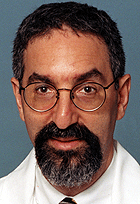Scientists have shown how developing brain tumors can turn an encounter with a signaling molecule from a fatal experience for the tumor cells into a cue for their own growth and multiplication.
School of Medicine researchers found the transformation relies on at least two other molecules that can be modified with existing drugs, opening the possibility that they may be able to use the established drugs to treat brain tumors.

The study, reported in Cancer Research, was conducted in a mouse model of neurofibromatosis type 1 (NF1), a genetic condition that leads to the development of benign and malignant tumors.
“In addition to opening up several new, exciting possibilities for brain tumor treatment both in NF1 and generally, this research is leading to what could be a very important set of insights into fundamental mechanisms of tumor formation,” said the paper’s senior author, Joshua Rubin, M.D., Ph.D., assistant professor of pediatrics, of neurology and of neurobiology.
Rubin studies general pediatric brain tumor development. His colleague and co-author David H. Gutmann, M.D., Ph.D., the Donald O. Schnuck Family Professor of Neurology, specializes in NF1 research and directs the University’s Neurofibromatosis Center, where the research took place.
The signaling molecule that scientists studied, CXCL12, binds to a receptor called CXCR4 on the surfaces of brain cells. Other researchers first identified CXCR4 while searching for receptors targeted by HIV during infection. They later found that the receptor was associated with cell movement, survival and replication, all of which are changed in cancers.

Gutmann’s lab has conducted extensive research showing how the environment immediately surrounding NF1 brain tumors known as gliomas influences their formation and maintenance. Most NF1 brain tumors occur in the optic pathway, the region of the brain that relays information from the retinas to the visual cortex in the back of the head. These tumors generally stop growing after patients reach puberty. Both characteristics suggest that something encouraging cancer formation and growth is present in the optic pathway during a specific time of life in NF1 patients.
Rubin and Gutmann collaborated to see if CXCL12 was the answer. Rubin checked for elevated CXCL12 activity levels in human tumor samples and found higher levels in the tumors and in normal tissue inside the tumors. He also found that the optic pathway generally had higher levels of CXCL12 activity than other brain region.
Rubin took brain cells called glia from Gutmann’s mouse model of NF1 and exposed them to CXCL12. Normal mouse glia died after exposure to CXCL12, but glia from the mouse model divided and grew in response to CXCL12.
Rubin linked that effect to levels of a compound known as cyclic adenosine monophosphate (cAMP). Lower cAMP levels meant cells thrived after exposure to CXCL12. Higher levels meant they died in response to it. He also found the optic pathway has much lower levels of cAMP than any other brain region, and that lower cAMP levels were associated with loss of function of the neurofibromatosis gene, which causes NF1.
“My lab had previously shown that loss of this gene made glia more likely to grow and divide, and through this collaboration, we’ve learned how it also makes these cells more likely to survive, another step on the pathway to becoming cancerous,” Gutmann said.
Rubin and Gutmann have recently begun animal trials to see if a drug that elevates cAMP levels can inhibit tumor growth in Gutmann’s mouse model of NF1. They point out that the link between CXCR4 and tumor survival also may mean that drugs developed to block HIV infection can help in the war on cancer.